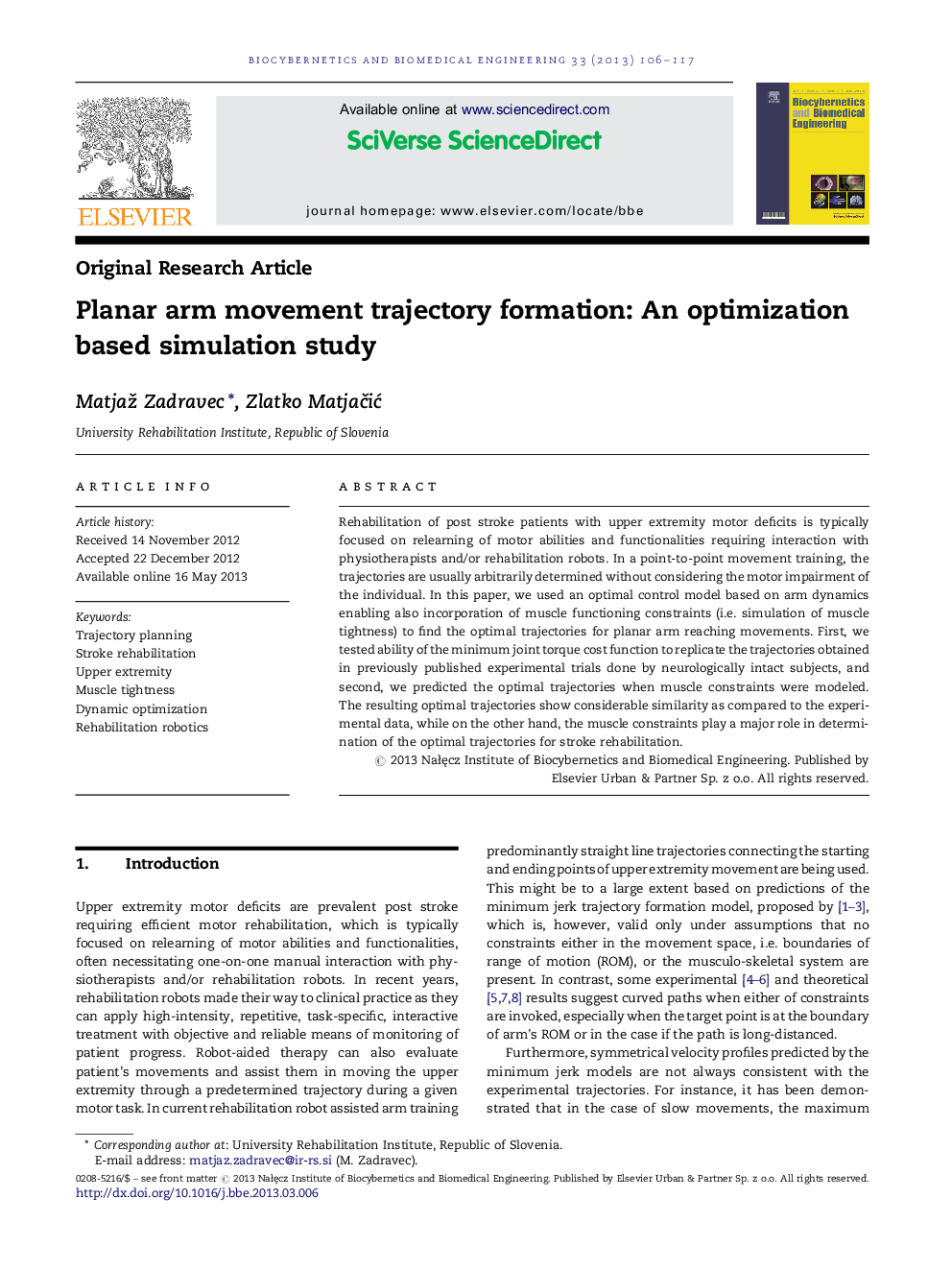| Article ID | Journal | Published Year | Pages | File Type |
|---|---|---|---|---|
| 5281 | Biocybernetics and Biomedical Engineering | 2013 | 12 Pages |
Rehabilitation of post stroke patients with upper extremity motor deficits is typically focused on relearning of motor abilities and functionalities requiring interaction with physiotherapists and/or rehabilitation robots. In a point-to-point movement training, the trajectories are usually arbitrarily determined without considering the motor impairment of the individual. In this paper, we used an optimal control model based on arm dynamics enabling also incorporation of muscle functioning constraints (i.e. simulation of muscle tightness) to find the optimal trajectories for planar arm reaching movements. First, we tested ability of the minimum joint torque cost function to replicate the trajectories obtained in previously published experimental trials done by neurologically intact subjects, and second, we predicted the optimal trajectories when muscle constraints were modeled. The resulting optimal trajectories show considerable similarity as compared to the experimental data, while on the other hand, the muscle constraints play a major role in determination of the optimal trajectories for stroke rehabilitation.
